Airport Extreme (5th Gen) and Time Capsule (4th Gen) Review - Faster WiFi
by Brian Klug on August 5, 2011 10:22 PM EST- Posted in
- Mac
- Airport Extreme
- Time Capsule
- WiFi
Construction overall is like the Airport Extreme, however, heat up the back to soften the adhesive, pry off, remove some screws, and then the top metal lid lifts off gently. There’s a fan attached to the lid which is plugged into the mainboard, however. That requires some care to unplug gently to avoid damage.
Unlike the Airport Extreme, the Time Capsule has an internal power supply, and, of course, a 3.5” HDD for Time Machine backups. With the lid off, you can already see that the mainboard has a short SATA cable, and the power supply has a SATA power connector in addition to another for the mainboard. The power supply easily lifts out, revealing the board underneath.
I suspect that some users are interested in doing things like buying a 2TB Time Capsule ($299) and bringing along their own 3TB drive instead of paying $499 for the 3TB version. I can’t speak for the 3TB Time Capsule version, but inside the 2TB Time Capsule is a relatively consumer level WD Green WD20EARS SATA II 2TB, 64MB of cache HDD.
It’s lipped with rubber and rests inside a metal caddy on three pieces of foam. On the PCB side the four mounting holes are home to some screws which mate up with a rubber support on the Time Capsule’s base. If you’re looking carefully, you’ll note one more foam piece with a cable leading off—there’s a thermistor attached to the drive using some foam and a plastic bracket.
The temperature sensor is used in conjunction with the SoC to control the Time Capsule’s fan. I played around with the drive and a heat gun (not the two together) alongside a contact-less IR thermometer, and found that the fan seems to turn on and spin at a moderate level at just above 120 F (49 C) and stays active during normal use when the sensor is around 115 F (45 C). At below 110 F (43 C), the fan turns off. At around 140 F (60 C) the fan will spin at maximum and the front LED light will flash amber, and note overheating is happening in the Airport utility. 60 C is the maximum recommended operating temperature for the WD20EARS, so this makes sense.
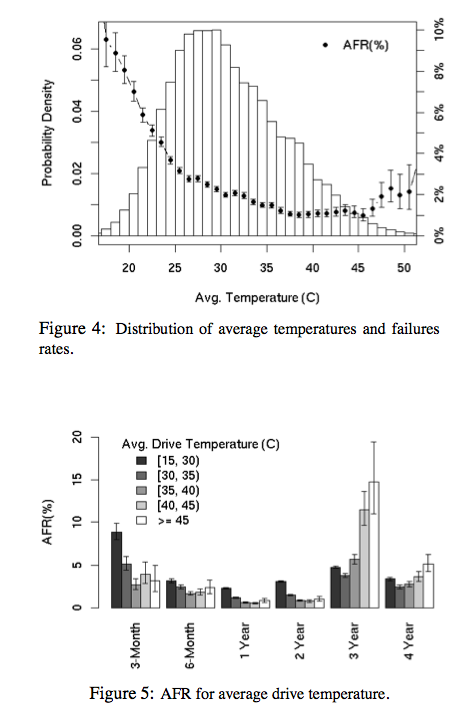
Google’s empirical study of disk failures has shown that between 40 and 45 C is ideal for prolonging drive life, so as long as things run in the fashion that I saw them run, it seems like drives shouldn’t fail due to excessive heat. That said, the airflow pattern in the Time Capsule seems odd—air is drawn in from the side, over and through the power supply, into the fan, then blown over half the drive, and hopefully exhausts through some small vents at the other side. Even with the fan spinning at maximum, it’s hard to really tell that any air is moving, and the only time you can even hear the fan is with it at maximum. The Time Capsule has a strong reputation for running warm, and I can definitely see why.
Upgrading the drive is simple enough. Transfer the four screws, rubber, foam, and the temperature sensor, and connect the SATA data and power cables. There’s also no need to preformat, as the airport utility has an auto formatting option as we’ll show later.
Disassembling the Time Capsule further shows some more interesting, if slightly expected details. On the reverse (top) side of the main PCB is the same Marvell SoC, switch, and flash module.
What’s different is that the Time Capsule gets double the RAM of the Airport Extreme—256MB of DDR2 instead of 128MB. Once again, we see the same dual BCM4331 based PCIe x1 WLAN card and four antenna connectors.
So there you have it, the main difference in both of Apple’s main WiFi AP products is the WLAN stack, which is a modern, more powerful BCM4331 based 3x3:3 solution. So, how has performance changed then?



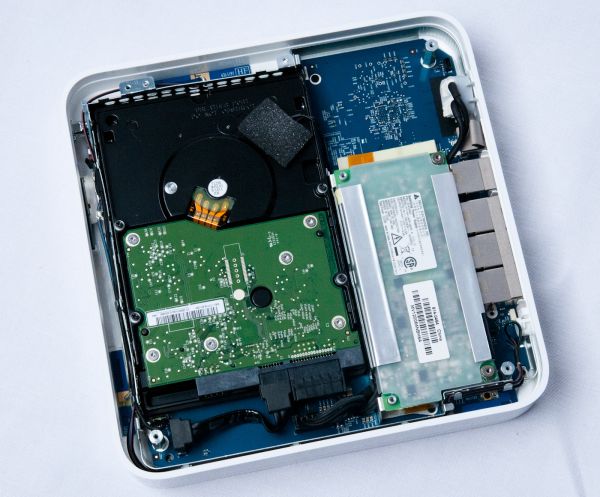
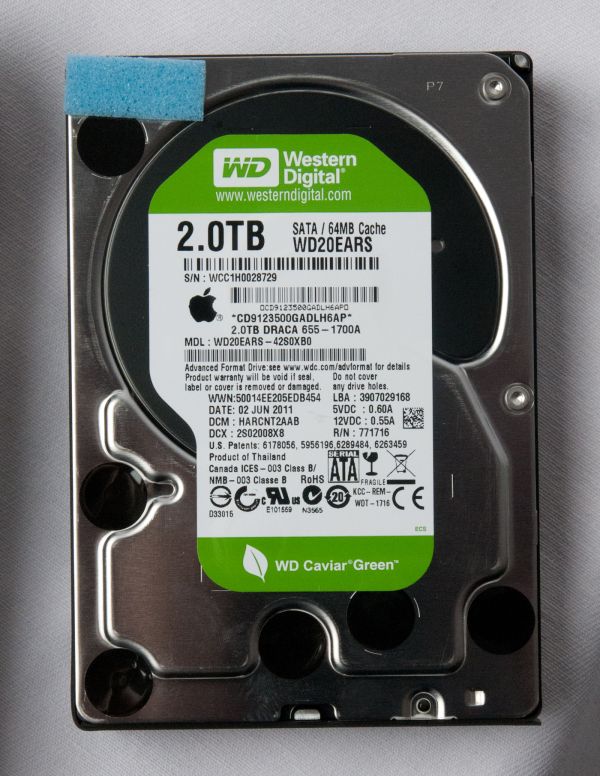
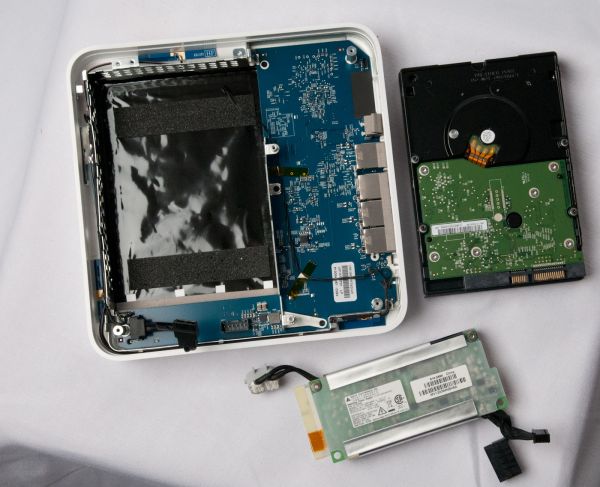

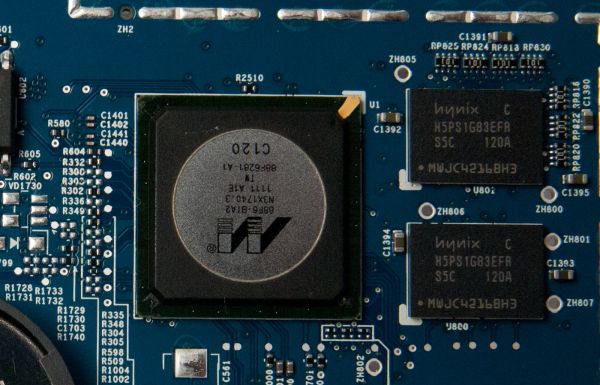














90 Comments
View All Comments
Dug - Monday, August 8, 2011 - link
I wish they would allow some type of iTunes server on the Time Capsule. Then I could stream to everything else such as my Apple TV's without having a computer on.tsanga - Monday, August 8, 2011 - link
Brian,When you took apart your older Airport Extreme, did you notice if the antennas might have been improperly connected? Swapping antenna hookups could result in better 2.4 GHz performance:
http://www.smallnetbuilder.com/wireless/wireless-f...
Brian Klug - Tuesday, August 9, 2011 - link
I'm not entirely sold on that smallnetbuilder conclusion from a long time ago, to say the absolute least. I suspect the swappage they experienced could be explained in other ways. Everything appears to match the way it should be assembled in the present state.-Brian
CharonPDX - Monday, August 8, 2011 - link
I have both a first-generation "square" AirPort Express-n (10/100 Ethernet) and a second generation (that added Gigabit,) both of which are single-band-at-a-time only. (i.e. I have to choose between 2.4 or 5 GHz for my whole network, no mixing.)When using either one as the 'primary', if I use my maximum bandwidth and/or lots of open connections (I seed Torrents of Debian install images for alternate architectures, I swear!) it will lock up my internet connection every so often. I know it's not my cable modem or the cable company, because if I direct-connect my server, I have no problems. But through either AirPort, every half hour or so of heavy use, my internet will stall until I reboot the base station.
Have you performed any such testing? I haven't read any complaints about newer generation ones, but want to make sure.
Brian Klug - Tuesday, August 9, 2011 - link
You're using the device as a router in that configuration? I haven't heard of any such problems on the newer Gen 4 or 5, and I beat on mine pretty hard too and haven't seen it stall/hang.-Brian
weiran - Tuesday, August 9, 2011 - link
I have the original N Airport Extreme (100Mb) and I don't suffer the issue you have. I did have problems with using Time Machine with an attached disk over WiFi causing router lockups, I've since disabled it and the AE runs weeks without issues.davolfman - Monday, August 8, 2011 - link
It's nice to see somebody using the Sheeva SOC's in a shipping product. Too bad the RAM and Flash is so low or it would make a tempting (better designed) Sheevaplug replacement.bbarrera - Tuesday, August 9, 2011 - link
Great article, however please change "AFS" (whatever that is) to AFP.blueeyesm - Tuesday, August 9, 2011 - link
I use the "n" Express with a D-Link wireless router and I've had no issues via WDS. It connected and maintained a strong signal through two floors of a house, and through two walls (one of which was a fire-rated wall) of an apartment.pcworth - Tuesday, August 9, 2011 - link
I was wondering if there are any differences in connection reliability and WIFI speed continuity. I have a Gen4 Extreme that was purchased in February and it seems like I have recently started to get slowdowns on the internal network that are corrected by resetting the unit using the Airport Software.I originally owned the b/g spaceship and a b/g express, but when we bought our iPads in April 2010 we noticed that the airport station would stop connecting until the units were restarted. We tried working around this using power timers to restart the units, but in the end we gave up and bought a new Gen4 extreme. This problem has now stopped.
I have no idea whether the problem is a temporary glitch, a hardware problem, or my imagination. It does seem to affect the AppleTV most, which is at the opposite end of the house, because we find it sometimes takes a long time to start streaming from iTunes. When I go in and reset the unit, it seems to improve.
I was wondering if there are any measures of speed stability, and connection stability, to determine whether the Gen5 is more reliable than the Gen4 and worth thinking about for an upgrade?
Thanks!